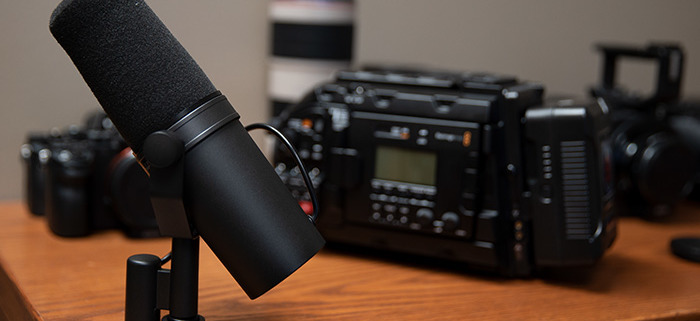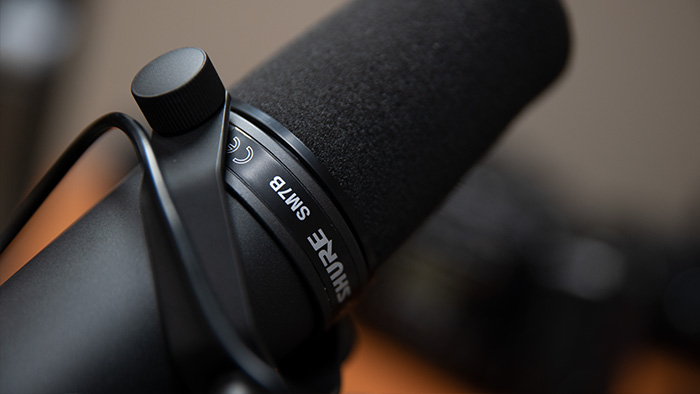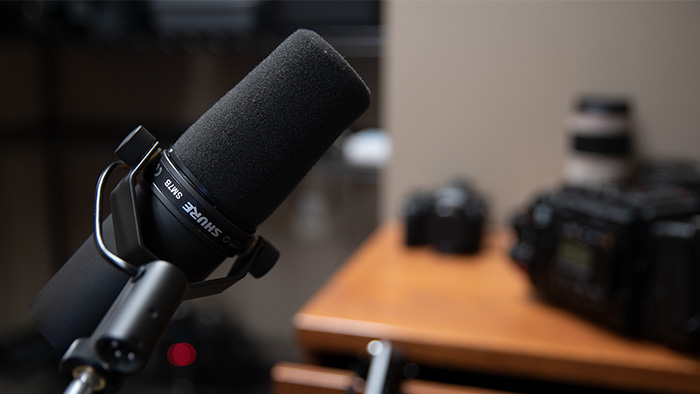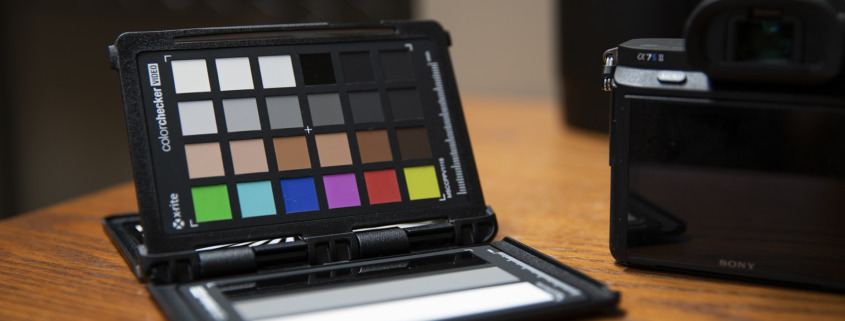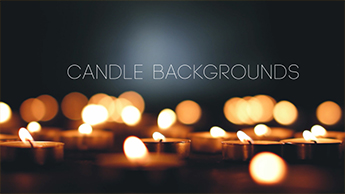Shure SM7B Microphone
When producing a video and recording the audio, the sensible solution is to look up the cheapest Rhode shotgun mic and attach it to the hot shoe of the DSLR camera. That is fine if you are producing a elementary highlight video of their field day, but the more shooting and recording you do, the better trained your ears become to being able to discern what good audio is, and empty audio. A shotgun mic is an extremely direction mic that picks of vocal ranges 40 Hz to 20 kHz, which differs based upon the mic you are using. For instance, the Sennheiser MKE 600 shotgun mic is brilliant in its durability, its dependability and its sound quality. But when comparing this mic to the Shure SM7B micrphone, the warm vocal quality simply isn’t there.
While the shotgun works great for run-n-gun situations, for more standard and formal interviews, I recommend a mic that reaches deeper into the human vocal range and doesn’t leave out half the tones that make a voice, full. The Shure SM7B microphone creates that feeling of closeness, warmness, and vocal responses that draw the audience in, which less need for remaster your audio using parametric EQ effects.
The SM7B dynamic microphone has a smooth, flat, wide-range frequency response appropriate for music and speech in all professional audio applications. It features excellent shielding against electromagnetic hum generated by computer monitors, neon lights, and other electrical devices.
The SM7B has been updated from earlier models with an improved bracket design that offers greater stability. In addition to its standard windscreen, it also includes the A7WS windscreen for close-talk applications.
Features
- Flat, wide-range frequency response for exceptionally clean and natural reproduction of both music and speech
- Bass rolloff and mid-range emphasis (presence boost) controls with graphic display of response setting
- Improved rejection of electromagnetic hum, optimized for shielding against broadband interference emitted by computer monitors
- Internal “air suspension” shock isolation virtually eliminates mechanical noise transmission
- Highly effective pop filter eliminates need for any add-on protection against explosive breath sounds, even for close-up vocals or narration
- Now shipping with the A7WS detachable windscreen, designed to reduce plosive sounds and gives a warmer tone for close-talk vocals
- Yoke mounting with captive stand nut for easy mounting and dismounting provides precise control of microphone position
- Classic cardioid polar pattern, uniform with frequency and symmetrical about axis, to provide maximum rejection and minimum coloration of off-axis sound
- Rugged construction and excellent cartridge protection for outstanding reliability
- Replacement cartridge: RPM106
So when considering your next mic choice, don’t just run to whatever is cheapest and easy. Take the time to buy equipment that will deliver quality audio. The Shure SM7B will do just that.

